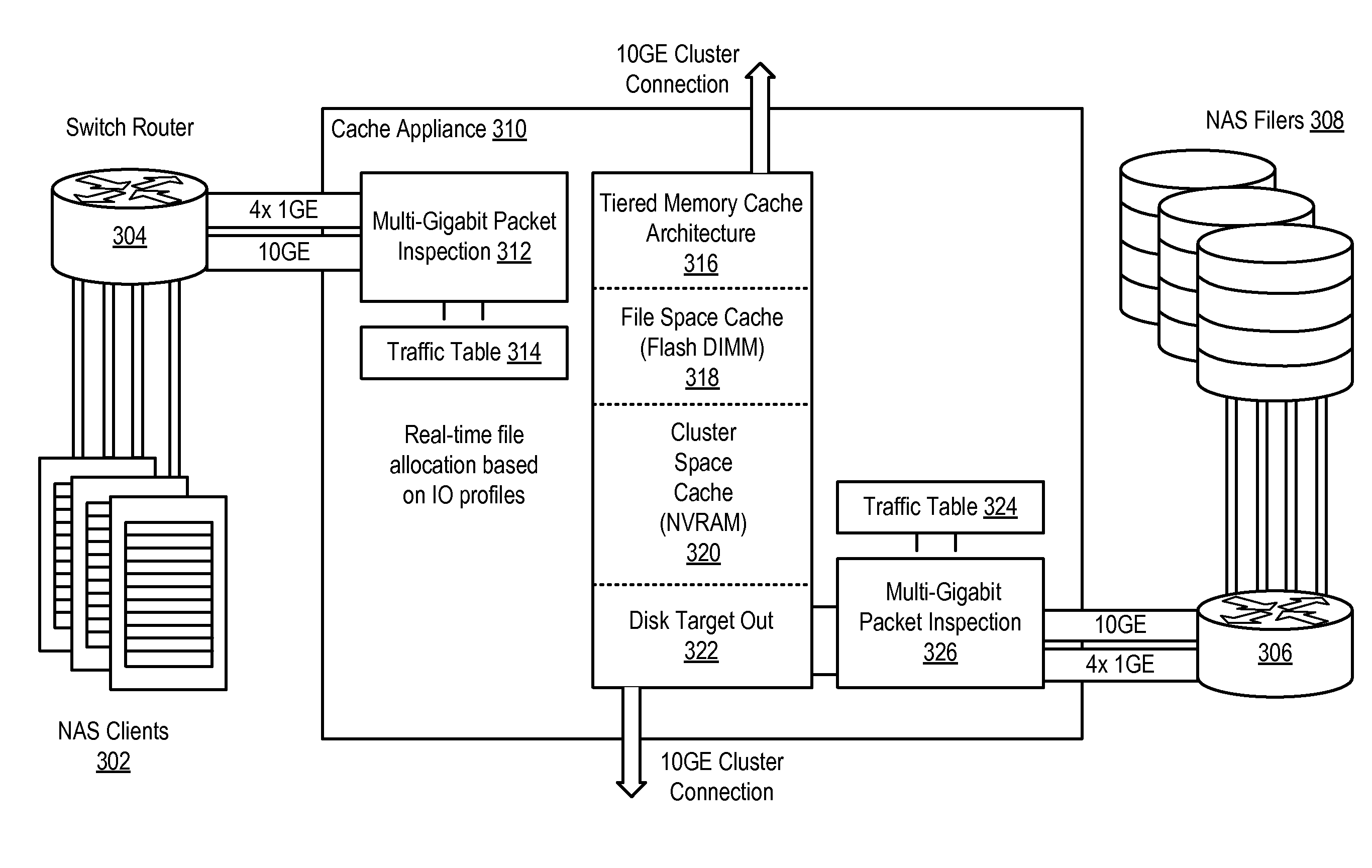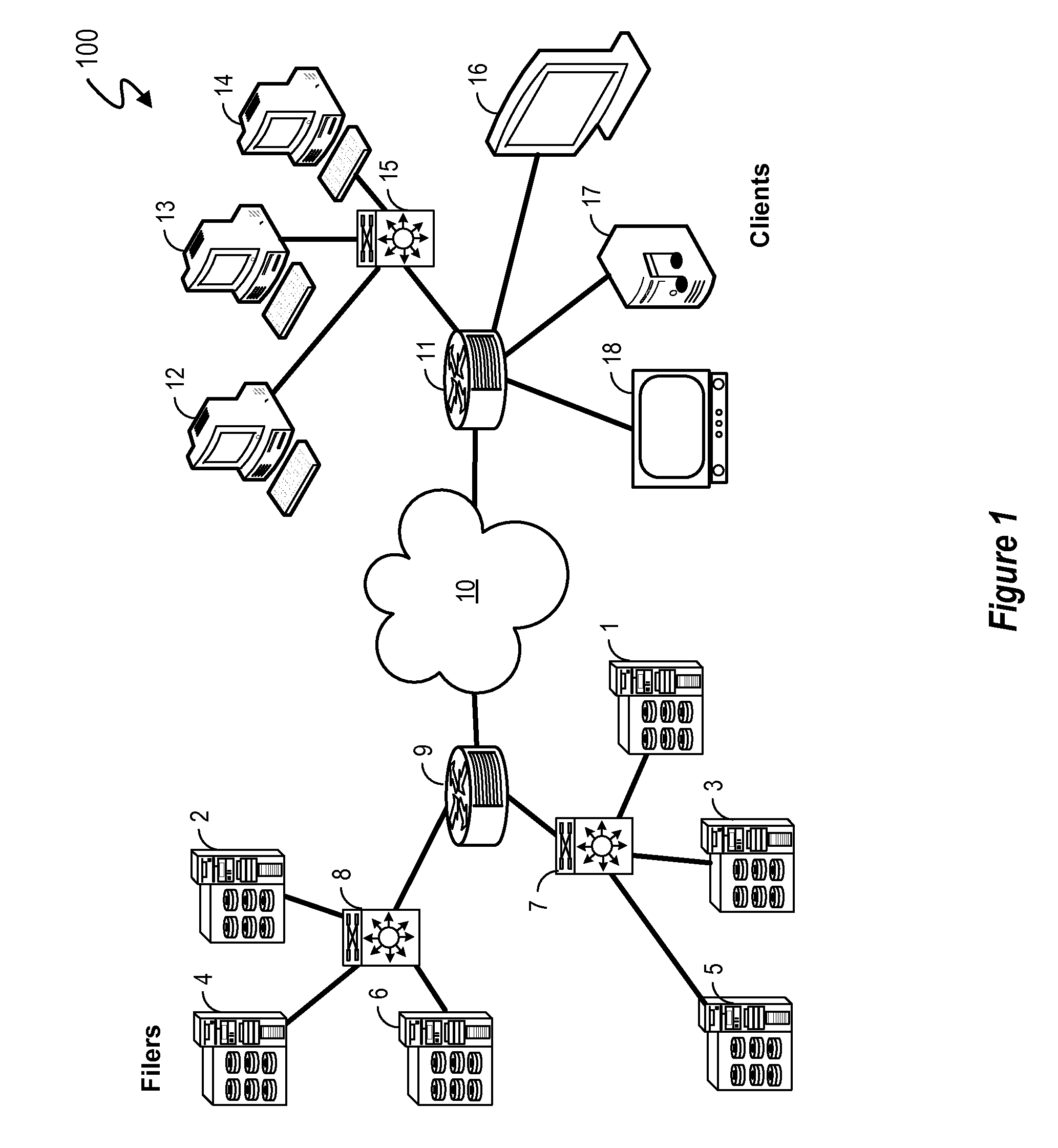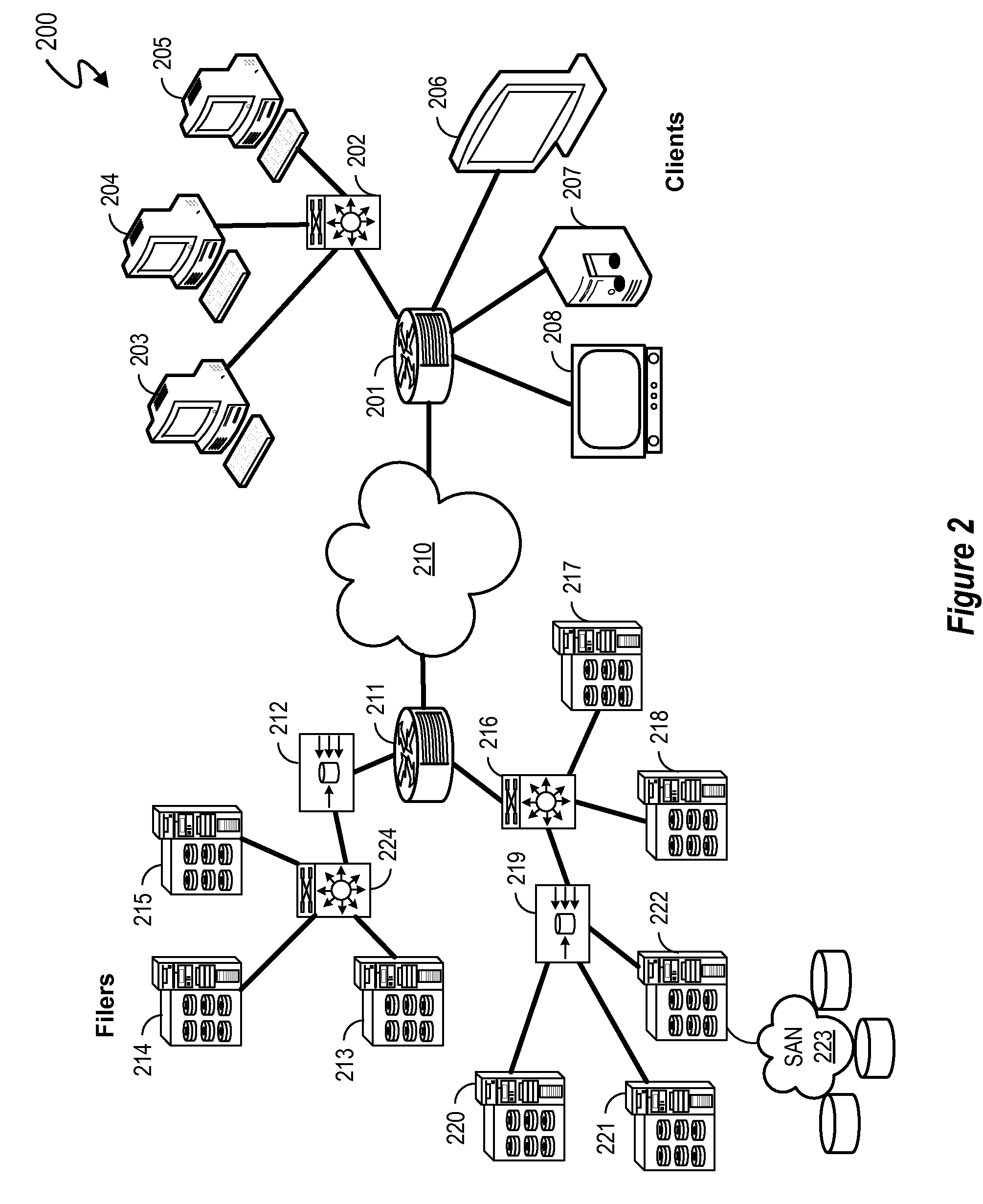Flash DIMM in a Standalone Cache Appliance System and Methodology
a cache appliance and flash dimm technology, applied in the field of computer storage networks, can solve the problems of insufficient performance gap, insufficient access speed of the disk drive, and many reasons, and achieve the effects of less power consumption, improved performance, and reduced cos
- Summary
- Abstract
- Description
- Claims
- Application Information
AI Technical Summary
Benefits of technology
Problems solved by technology
Method used
Image
Examples
Embodiment Construction
[0021]A method, system and program are disclosed for accelerating data storage access by adaptively caching selected data in a scalable, stand-alone cache appliance that transparently monitors NFS and CIFS traffic between clients and NAS subsystems and caches files using dynamically adjustable cache policies that reflect the business requirements and / or application workloads that change over time. In selected embodiments, one or more cache appliances may be connected or clustered together in front of an NAS filer (group) to provide low-latency access and redundancy in responding to both read and write requests for cached files, thereby improving access time to the data stored on the disk-based NAS filer (group). Instead of using DRAM memory to cache data at the one or more cache appliances, a NAND flash memory scheme is used to cache data by pipelining multiple page write and page program operations to different flash memory ranks in the flash memory, thereby providing a cache memor...
PUM
 Login to View More
Login to View More Abstract
Description
Claims
Application Information
 Login to View More
Login to View More - R&D
- Intellectual Property
- Life Sciences
- Materials
- Tech Scout
- Unparalleled Data Quality
- Higher Quality Content
- 60% Fewer Hallucinations
Browse by: Latest US Patents, China's latest patents, Technical Efficacy Thesaurus, Application Domain, Technology Topic, Popular Technical Reports.
© 2025 PatSnap. All rights reserved.Legal|Privacy policy|Modern Slavery Act Transparency Statement|Sitemap|About US| Contact US: help@patsnap.com



